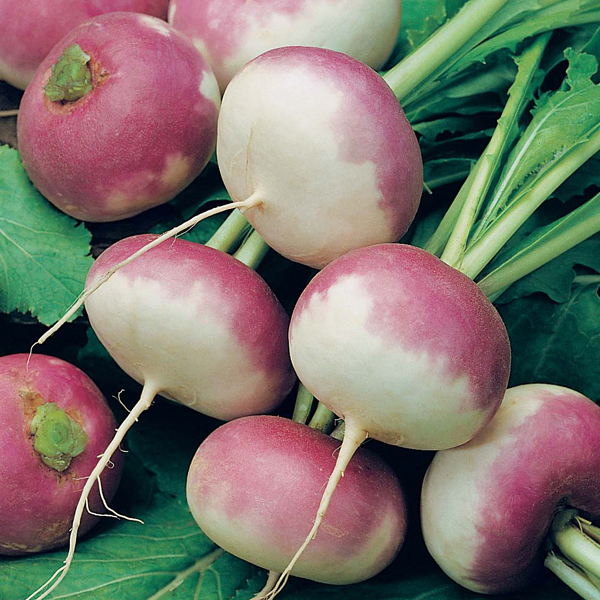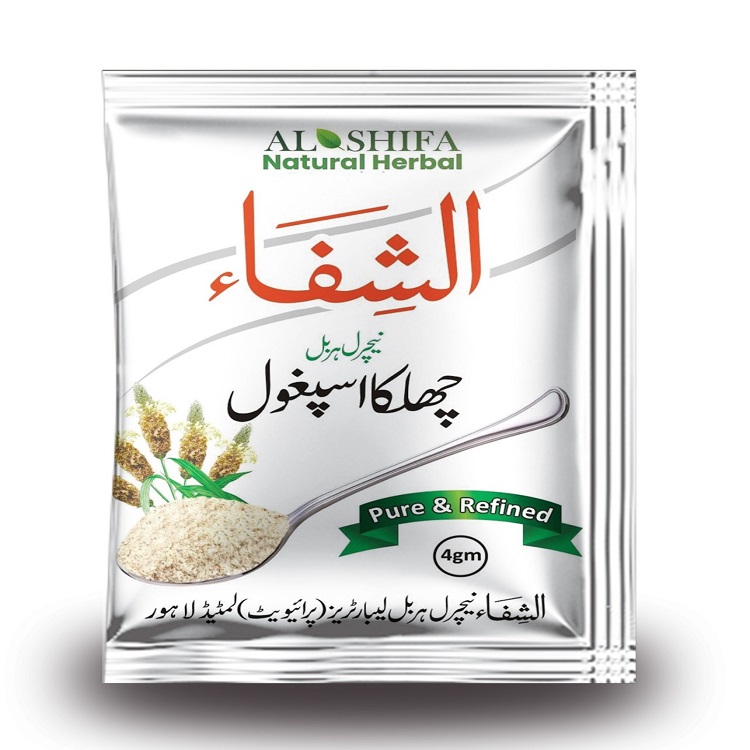Description
Turnip seeds are aperient, diuretic and emmenagogue. They can be used to treat diarrhoea, wet coughs, sneezing and gas. Also useful in sexual debility and erectile dysfunction. Helps produce blood cells due to its high iron and copper content, purifies the blood and is considered to be an effective treatment for anaemia. Turnip is most effective in treating respiratory ailments. Its expectorant effect helps relieve coughs, hoarseness, sore throats, and bronchitis.
The root of the Turnip when eaten increases the body’s resilience to stress and illness.
Recommended Dosage
3 g powder of dried seeds.
Contraindication
This herb has no known warnings or contraindications.
Turnips
Turnips (Brassica rapa) are round red, white, or purple root vegetables with green leafy tops that are also edible.
Health Benefits of Turnips
-
- Increased Immune Function
- Protection Against Heart Disease
- Alleviation of Cardiovascular Disease
- Alleviation of Hypertension (High Blood Pressure)
- Reduced Risk of Type II Diabetes
- Reduced Frequency of Migraine Headaches
- Alleviation of Premenstrual Syndrome (PMS)
*Some of these health benefits are due to the nutrients highly concentrated in Turnips, and may not necessarily be related to Turnips.
How to choose Turnips
Look for vibrantly colored turnips with no signs of wilting or becoming soft. If the greens are attached, try make sure they are as crisp as possible and don’t look wilted.
Climate and origin
It is not known where the turnip originated, however, records of its first cultivation are found in Greece and Europe and therefore it is assumed the turnip originated somewhere in Europe or Asia. A hardly plant that likes cold temperatures turnips will grow in cold temperate to subtropical climates. (Zones 3-9 in the U.S.)
Taste
Turnips have a bland but slightly pungent taste and a very crisp texture. The greens are often eaten cooked and have a sharp taste.
Similar tasting produce
Daikon, Rutabagas
Recipes using Turnips
Turnip Soup with Daikon
Natural vitamins, minerals, and nutrients found in Turnips + Complete Nutrition Facts
Vitamin C | Dietary Fiber | Magnesium
|
||||||||||||||||||||||||||||||||||||||||||||||||||||||||||||||||||||||||||||||||
|
||||||||||||||||||||||||||||||||||||||||||||||||||||||||||||||||||||||||||||||||
|
||||||||||||||||||||||||||||||||||||||||||||||||||||||||||||||||||||||||||||||||
|
||||||||||||||||||||||||||||||||||||||||||||||||||||||||||||||||||||||||||||||||
|
||||||||||||||||||||||||||||||||||||||||||||||||||||||||||||||||||||||||||||||||
|
||||||||||||||||||||||||||||||||||||||||||||||||||||||||||||||||||||||||||||||||
Turnips: Health Benefits, Facts, Research
The turnip has been a popular staple in the European diet since prehistoric times. It is often grouped in with root vegetables like potatoes and beets, but is actually part of the cruciferous family.
Along with its nutritional powerhouse cruciferous cousins like broccoli, Brussels sprouts, arugula and kale, turnips provide a high amount of nutrients for a low amount of calories.
The leafy greens of the turnip are also edible and provide a bevy of health benefits. This article will focus on consumption of the bulbous root, which is most often a creamy white color with a purple top where it has been exposed to the sun.
This MNT Knowledge Center feature is part of a collection of articles on the health benefits of popular foods. It provides a nutritional breakdown of the turnip and an in-depth look at its possible health benefits, how to incorporate more turnips into your diet and any potential health risks of consuming turnips.
Possible health benefits of turnips
Consuming fruits and vegetables of all kinds has long been associated with a reduced risk of many adverse health conditions.
Many studies have suggested that increasing consumption of plant foods like turnips decreases the risk of obesity, diabetes, heart disease and overall mortality while promoting a healthy complexion, increased energy, and overall lower weight.
1) Treating diverticulosis
High fiber diets have been shown to decrease the prevalence in flare-ups of diverticulitis by absorbing water in the colon and making bowel movements easier to pass.
Eating a healthful, fruit and vegetable and fiber-filled diet can reduce pressure and inflammation in the colon. One cup of cooked turnips provides 4 grams of fiber.
Although the cause of diverticular disease is unknown, it has been repeatedly associated with a low fiber diet.4
2) Lowering blood pressure
According to a 2013 study published in the British Journal of Clinical Pharmacology, foods containing dietary nitrates like turnips and collard greens have been shown to have multiple vascular benefits, including reducing blood pressure, inhibiting platelet aggregation, and preserving or improving endothelial dysfunction.
In general, a diet rich in all fruits and vegetables has been shown to lower blood pressure as well. Turnips also have potassium, which is thought to bring blood pressure down by releasing sodium out of the body and helping arteries dilate.6
3) Fighting cancer
Since the 1980s, consuming high amounts of cruciferous vegetables like turnips, cauliflower and cabbage have been associated with a lower risk of cancer. More recently, researchers have been able to pinpoint that the sulforaphane compound that gives cruciferous vegetables their bitter bite is also what gives them their cancer-fighting power.
Promising results in studies testing sulforaphane’s ability to delay or impede cancer have been seen with multiple types of cancers including melanoma, esophageal, prostate and pancreatic. Sulforaphane-containing foods could potentially be an integral part of cancer treatment in the future.1
4) Weight loss, digestion and detox
Turnips and other cruciferous vegetables that are high in fiber help to keep you feeling full longer and are also low in calories. Eating high fiber meals keep blood sugar stable.
The fiber content in turnips also prevents constipation and promotes regularity for a healthy digestive tract. Regular, adequate bowel movements are crucial for the daily excretion toxins through the bile and stool.
Recent studies have shown that dietary fiber may play a role in regulating the immune system and inflammation, consequently decreasing the risk of inflammation-related conditions such as cardiovascular disease, diabetes, cancer, and obesity.
5) Maintaining vision
Adequate vitamin C intake has been shown to help keep eyes healthy by providing increased protection against UV light damage.6 Citrus fruits are often thought of first when it comes to increasing vitamin C intake, but many cruciferous vegetables are also surprisingly high in this important nutrient. Eating just two medium turnips would meet your vitamin C needs for the entire day.
A higher intake of all fruits and vegetables (3 or more servings per day) has also been shown to decrease the risk of and progression of age-related macular degeneration.
Nutritional profile of turnips
According to the USDA National Nutrient Database, one medium raw turnip (about 122 grams) contains 34 calories, 0 grams of fat, 8 grams of carbohydrate (including 5 grams and sugar and 2 grams of fiber) and 1 gram of protein.
Eating one medium turnip would provide 54% of daily vitamin C needs as well as 8% of manganese, 7% of potassium and 5% of vitamin B-6, folate, and copper.
How to incorporate more turnips into your diet
Choose turnips that are small and heavy for their size. Turnips that are harvested while young and small will have a sweet, mild flavor. As they continue to grow or age, the flavor gets spicier, and the texture will become rough and woody. Look for green tops that are brightly colored and fresh. You can use the greens for cooking or in a salad.
Store turnips in a cool and dim area, similar to potatoes. Make sure to wash, trim and peel turnips before use. Turnips have a crisp white inner flesh and a zesty, pepper flavor. They can be eaten raw or cooked, but roasting turnips tends to bring out their best flavor and qualities.
Quick tips for using turnips:
- Boil and mash turnips for a fun alternative to mashed potatoes
- Chop or shred raw turnips for a salad topper
- Add turnips to soup or stew at the same stage you would add potatoes
- Include cubed turnip into your next slow-cooked roast
- Add shredded turnip to your favorite coleslaw recipe.
Try some of these healthy and delicious turnip recipes developed by registered dietitians:




















Reviews
There are no reviews yet.